Half a mile offshore, walking on silver water, we crossed a path that extended gracefully and without apparent end to our north and south. It was a shallow tidal channel and the water it held caught and pooled the sun, such that its route existed principally in flux; a phenomenon of light and currents. Its bright line curved away from us: an ogee whose origin we could not explain and whose invitation to follow we could not disobey, so we walked it northwards, along that glowing track made neither of water nor of land, which led us further out to sea.
Robert MacFarlane
Step into other-worldly atmosphere of Britain's most perilous path, the Broomway. Stretching 6 miles across the tidal mud-flats of Maplin Sands in the Thames estuary, it links mainland Wakering to the MoD controlled Foulness Island. It dates back to the 15th century, and for centuries it was the only access point to the island. Until 1932 when Havengore Bridge was built. Still, to this day, the Broomway remains the only public footpath to the heavily restricted island that also operates as a live firing range.
If you consult a large-scale map of the Essex coastline between the River Crouch and the River Thames, you will see a footpath - its route marked with a stitch-line of crosses and dashes - leaving the land at a place called Wakering Stairs and then heading due east, straight out to the sea. Several hundred yards off shore, it curls north-east and runs in this direction for around three miles, still offshore, before cutting back to make landfall at Fisherman's Head, the uppermost tip of a large, low-lying and little-known marshy island called Foulness.
Robert MacFarlane
This is the Broomway, accessible only when the MoD firing range is not operational, which is usually only weekends. The path takes its name after sticks resembling brooms which once marked the safe passage through the mudflats. Sadly, the markers have long gone and the pathway now is impossible to see.
The Broomway gets its reputation as Britains Deadliest Pathway due to the dangers that it poses to walkers: quicksand, known locally as the black sands; deep water filled craters caused by explosions that are extremely hard to see; live unexploded ordnance that are fired out to sea from the firing range; and last but not least, the tide. Walking the Broomway without knowing the tide times is very dangerous, the tide comes in faster than you can run and due to the nature of the Maplin Sands it comes in around you. There are very few orientation points, therefore it is too easy to stray from the path when surrounded by sea fog or on a rainy, overcast day. Over the years, over 100 people lost their lives on the path due to miscalculating the tide or attempting the walk in bad conditions, and instead of walking towards the land walked further out to the sea.
For the last few years, I have wanted to walk this ancient path hidden by the sea. Finally, I decided to make the first step and include it in my Thames Estuary explorations. It is recommended not to walk it alone, and after reading about its deadly history, I would never attempt it. Fortunately, there is an experienced guide who regularly organises these walks, Tom Bennett. Tom is a qualified mountain leader and has an extensive knowledge of the path and its history. He is very passionate about walking, the great outdoors and loves to share his knowledge and passion with the others. He makes you feel safe, which allows you to enjoy the experience of this unique place without worrying about being caught by the tide or any other danger that this path presents. He even carries biscuits and a flask with tea for everyone, a lovely touch when you reach the sea wall on Foulness Island, the halfway point of the trip.
So on Saturday the 1st May we started the day by heading along the short causeway at the Wakering Stairs into the big unknown. Luckily the clear sky made it easier to spot the first marker in a far distance. A sunken telegraph pole called the Maypole, marking the south-eastern edge of a tidal channel named Havengore Creek. From there we could see the next marker, a start of the first accessible causeway to the Foulness Island, Asplins Head. That's where we were heading. You could easily understand how people got lost or even lost their lives in this vast expanse of sand, mud, water and sky. In bad conditions, none of the markers or the island's shore would be visible. If you stray to one side, too close to the shore, you will get trapped in black sands. If you walk out to the sea, you will get eventually surrounded by the fast incoming tide.
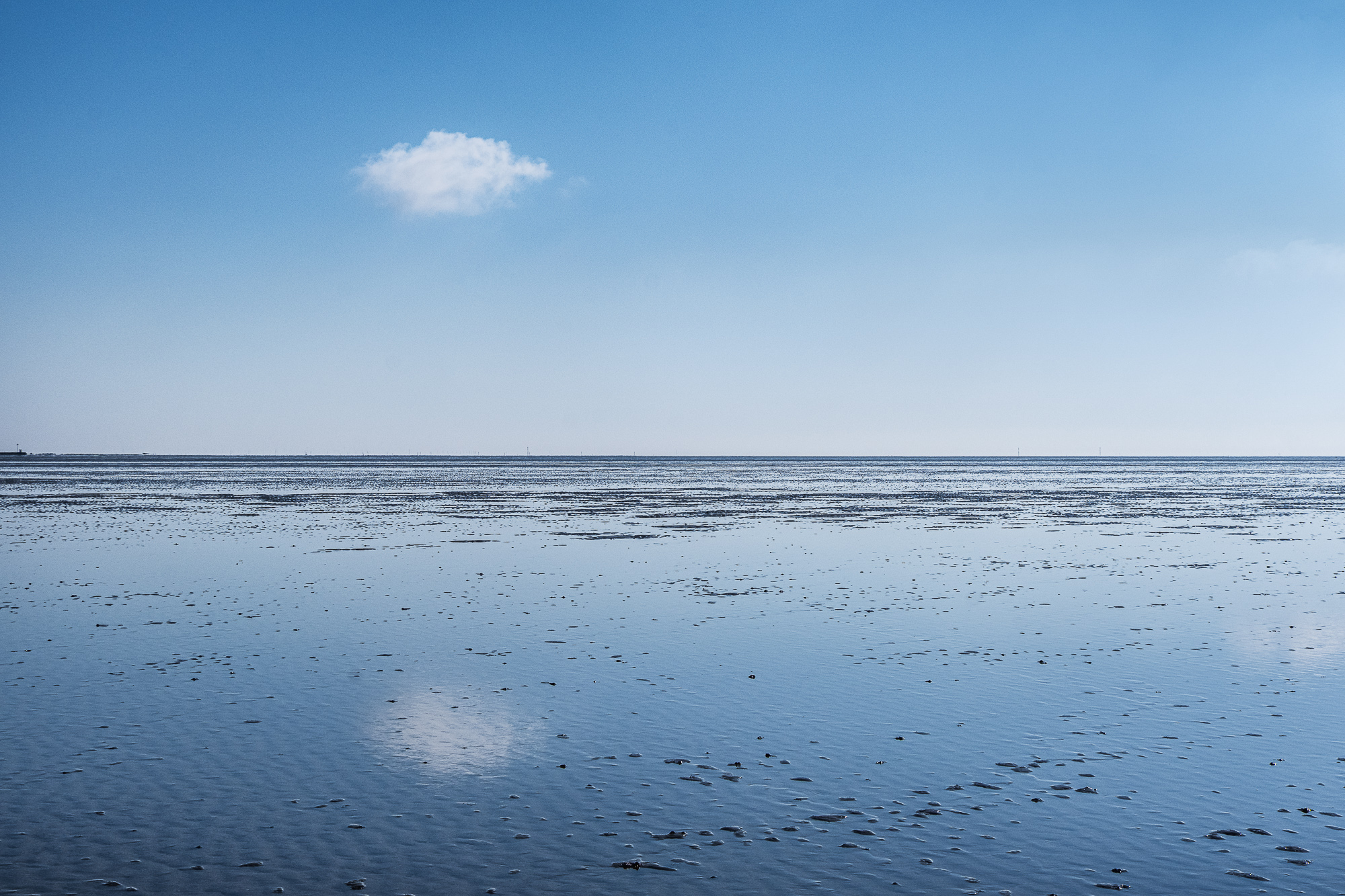
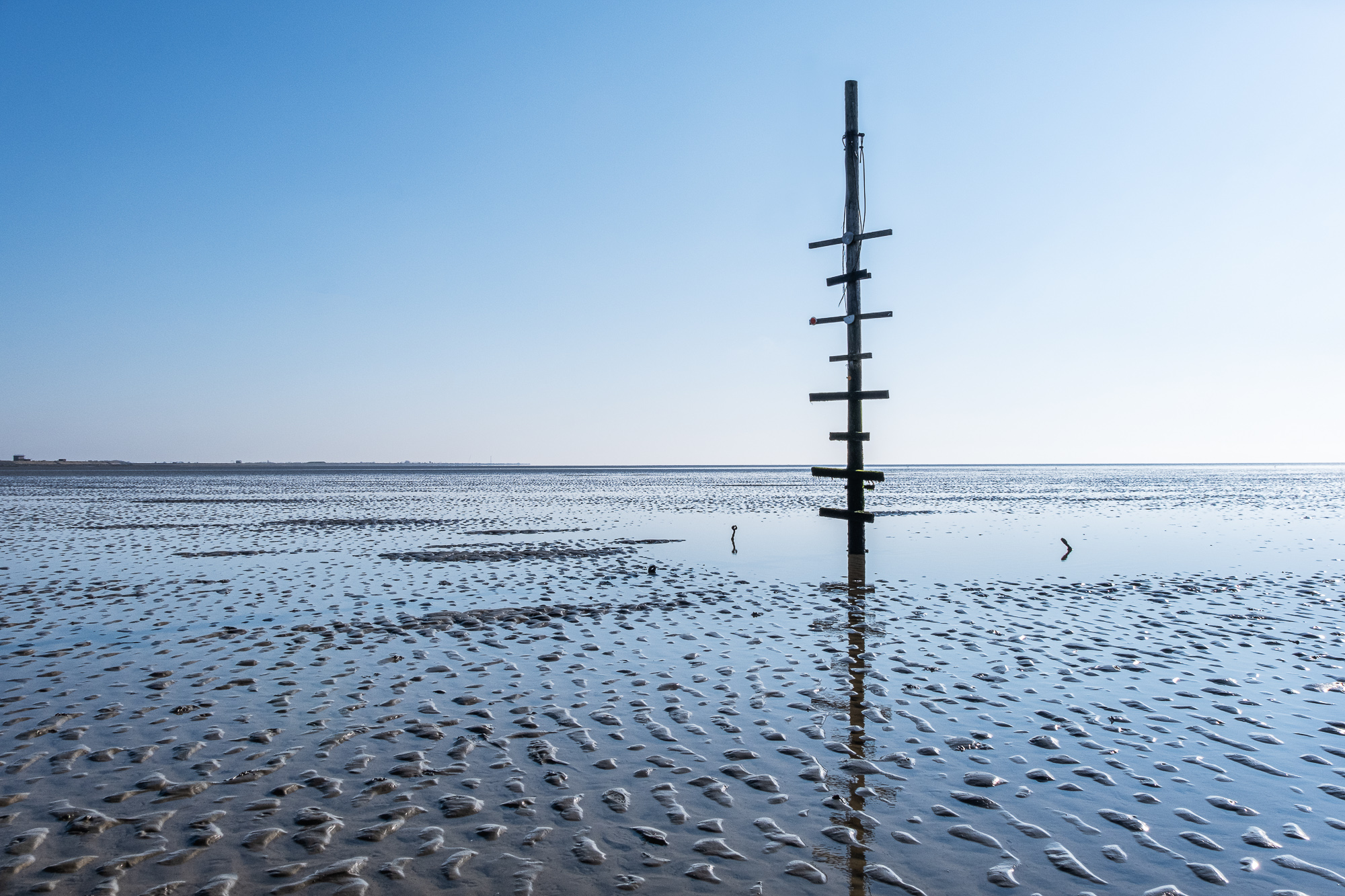
After a short break on the island we headed back into the unearthly world where the sky and the shore blend together. Shining ripples of sand and the sky reflecting in tidal water trapped in between, created a strange sense, like you were walking on the water. A walk through a mirrored world, surrounded by silence and blue sky above as well as below. Serene, desolate and infinite. A natural world turned supernatural.
There is no doubt that I will be back to explore more of this beautifully eerie tidal world.
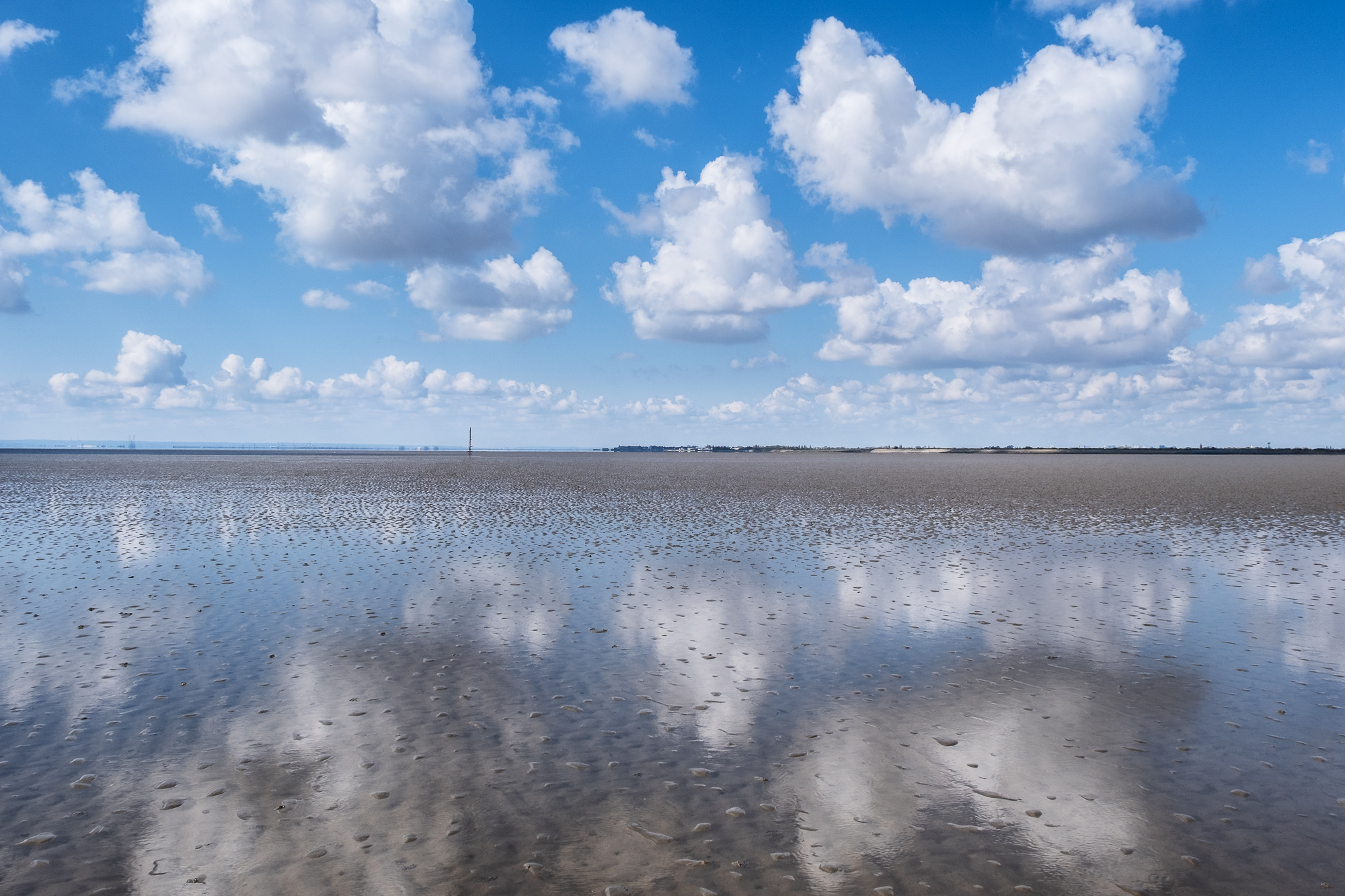
It's a weird world out there on the flats. Nothing looks the same as normal. Gulls can seem as big as eagles. Scale and distance change. It's very easy to lose your bearings, especially in dusk or dark. Then it's the lights on the Kent shore that often do it. People think they're walking back to the Essex coast, when in fact they're walking across towards Kent and so out into the tide. The mud's the thing to watch too: step in the wrong places, and it'll bog you down and suck you in, ready for the tide to take you.
Patrick Arnold
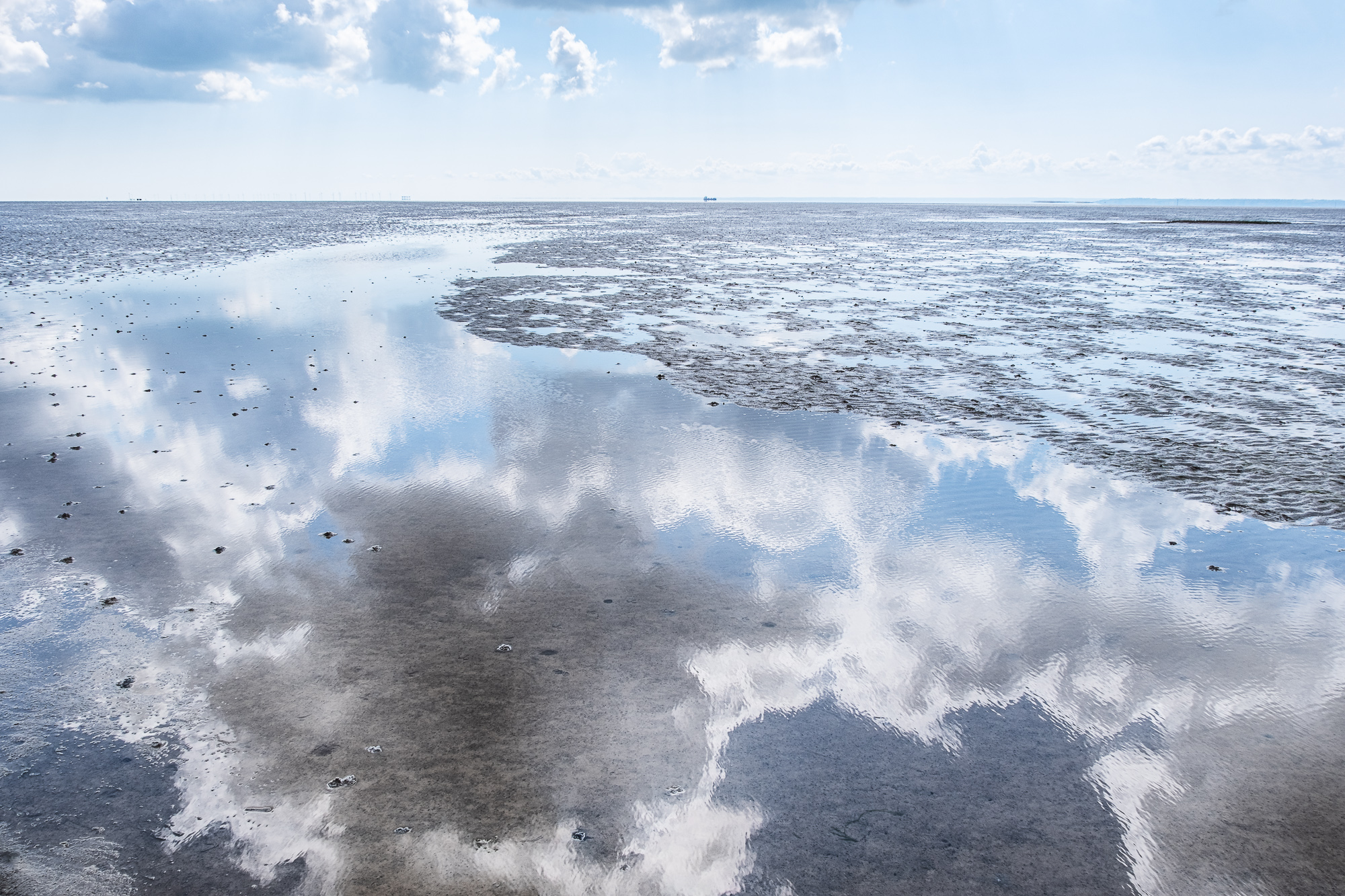
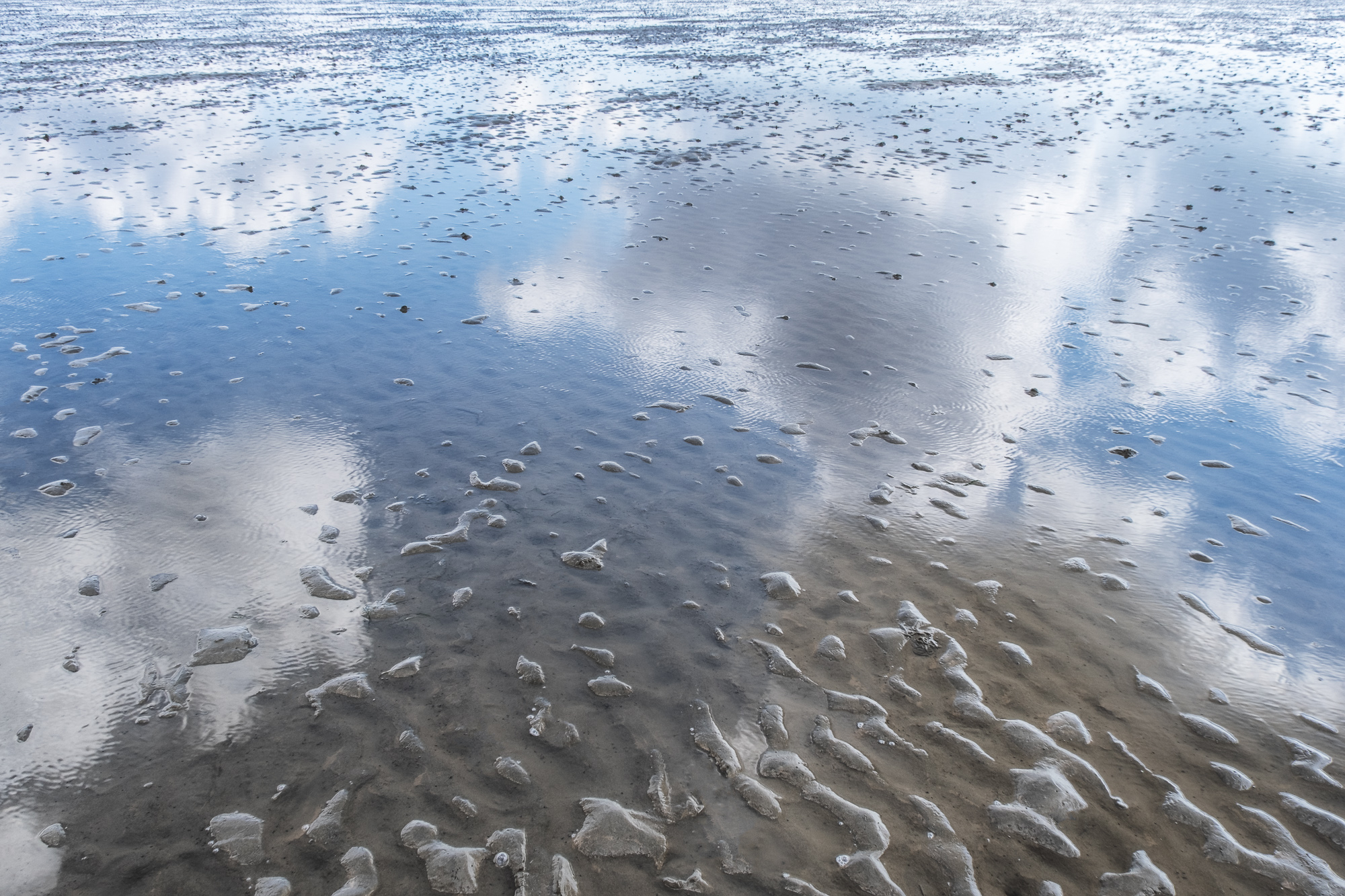
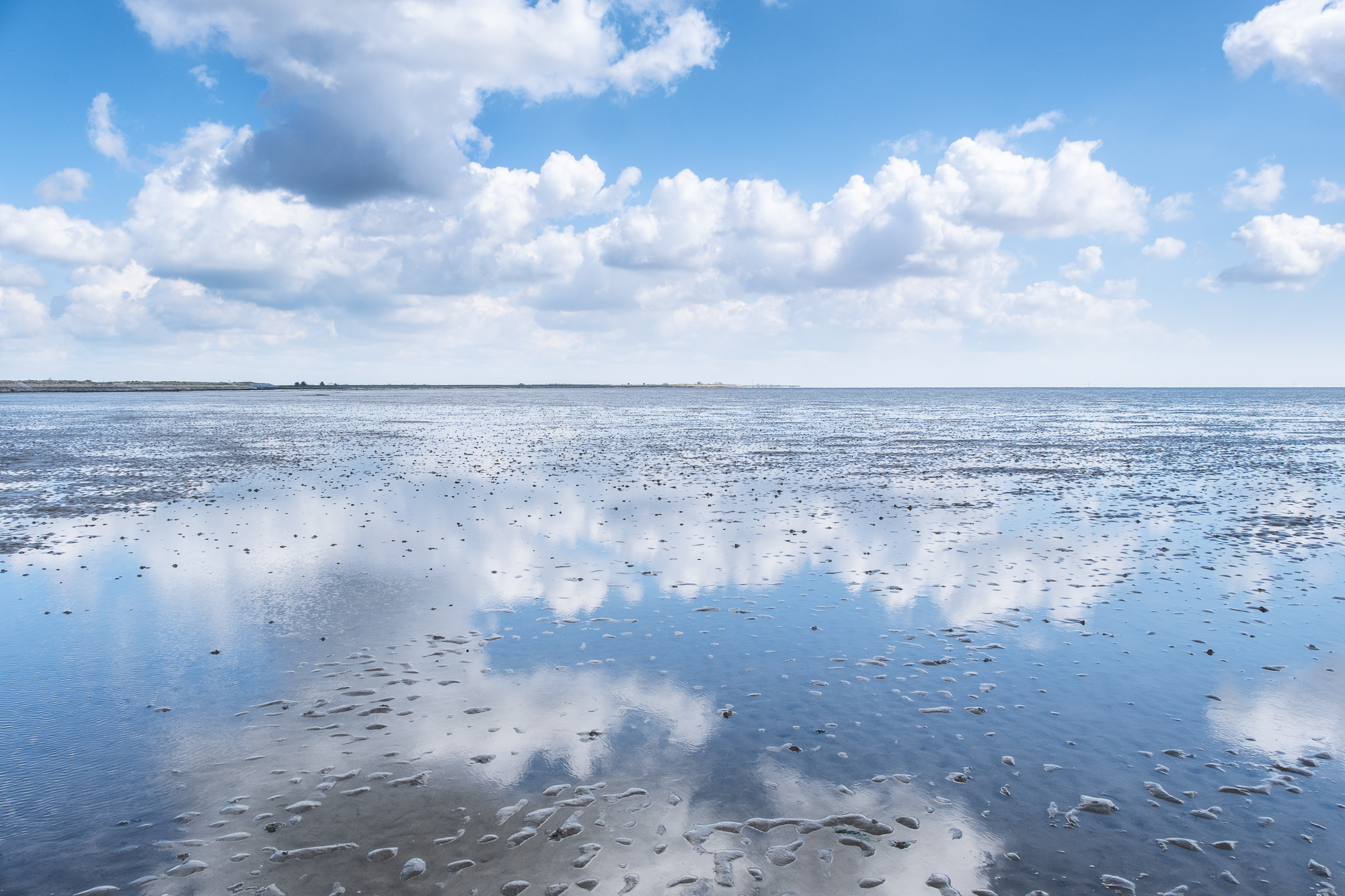
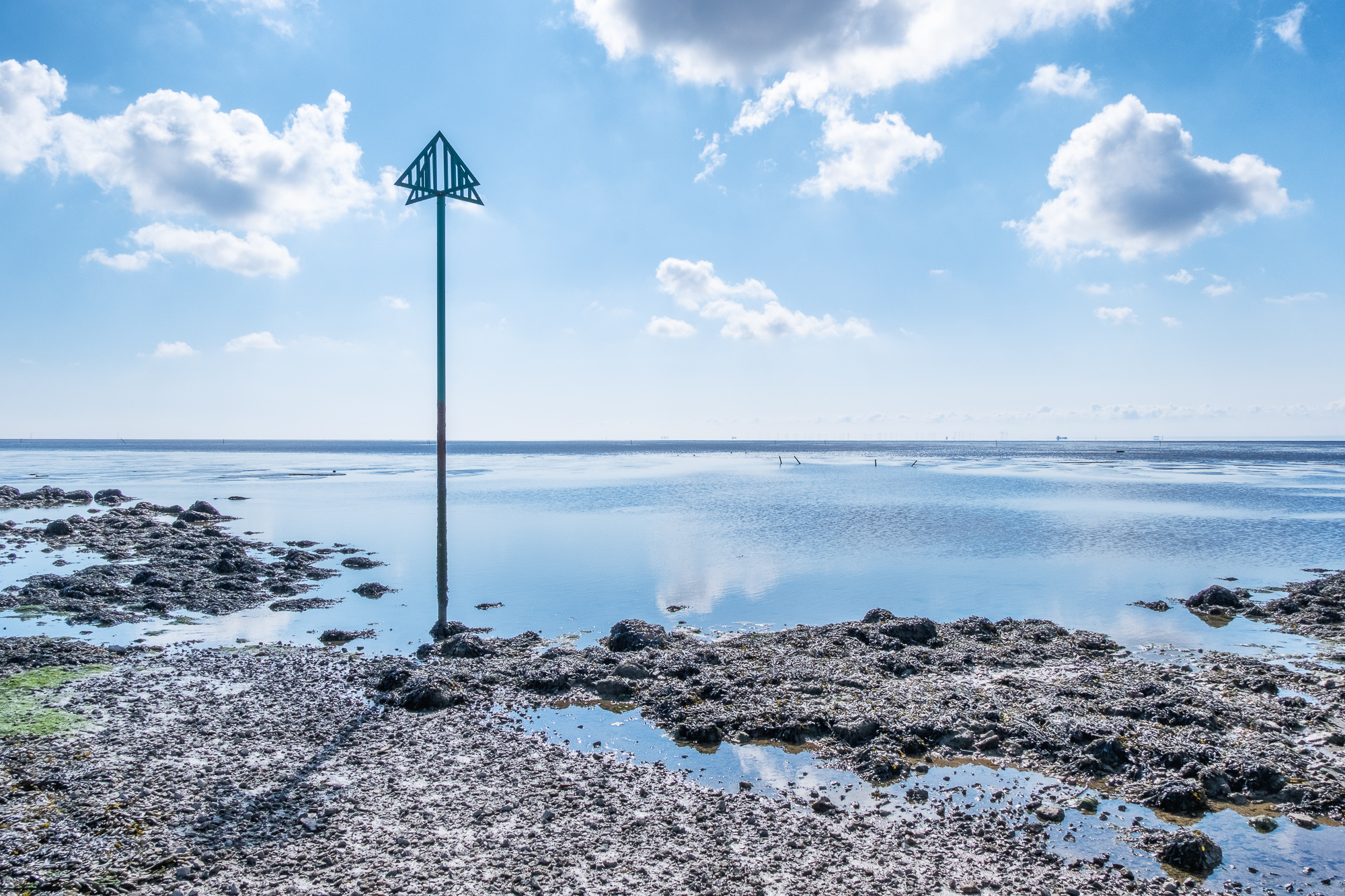
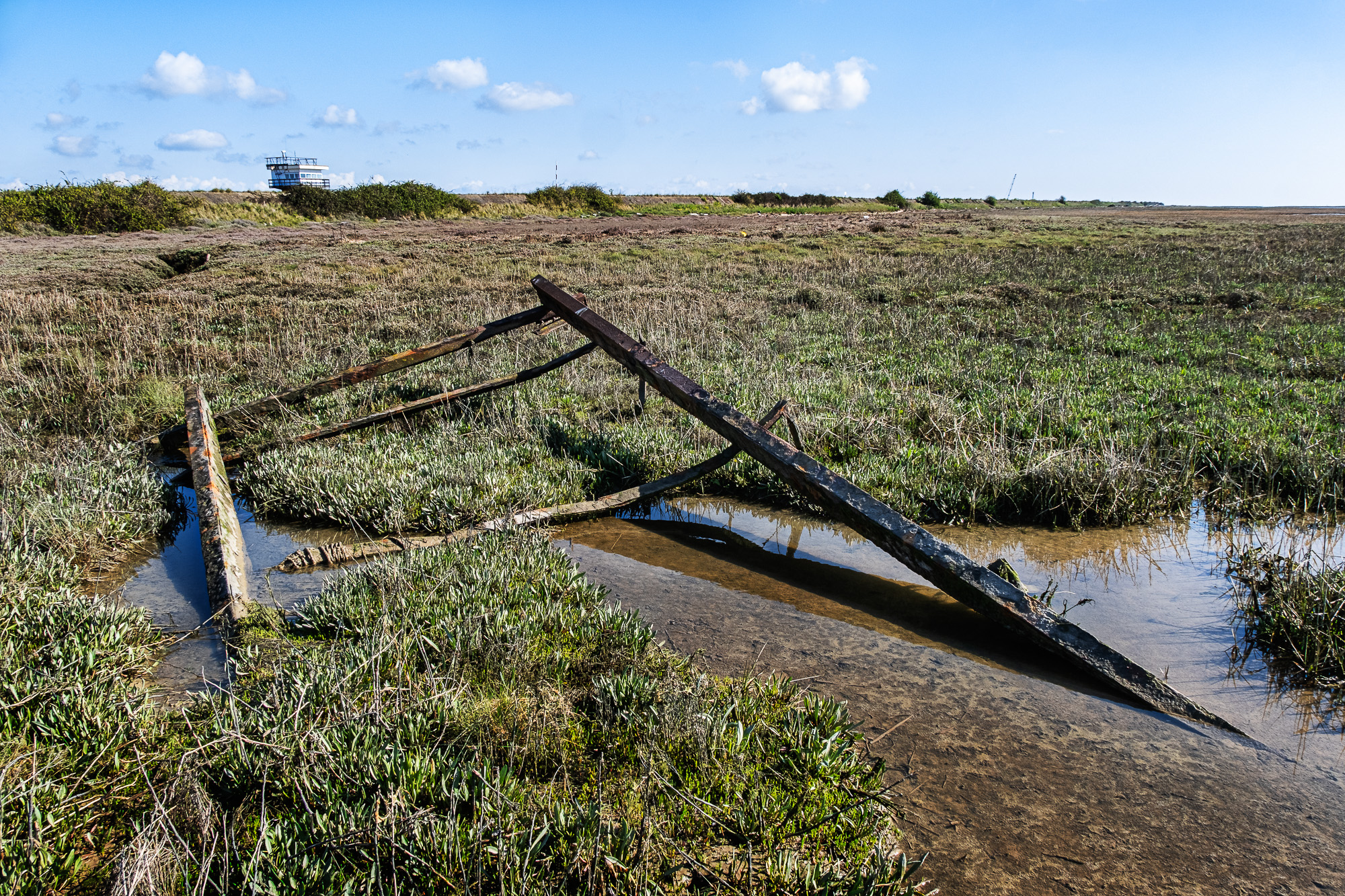
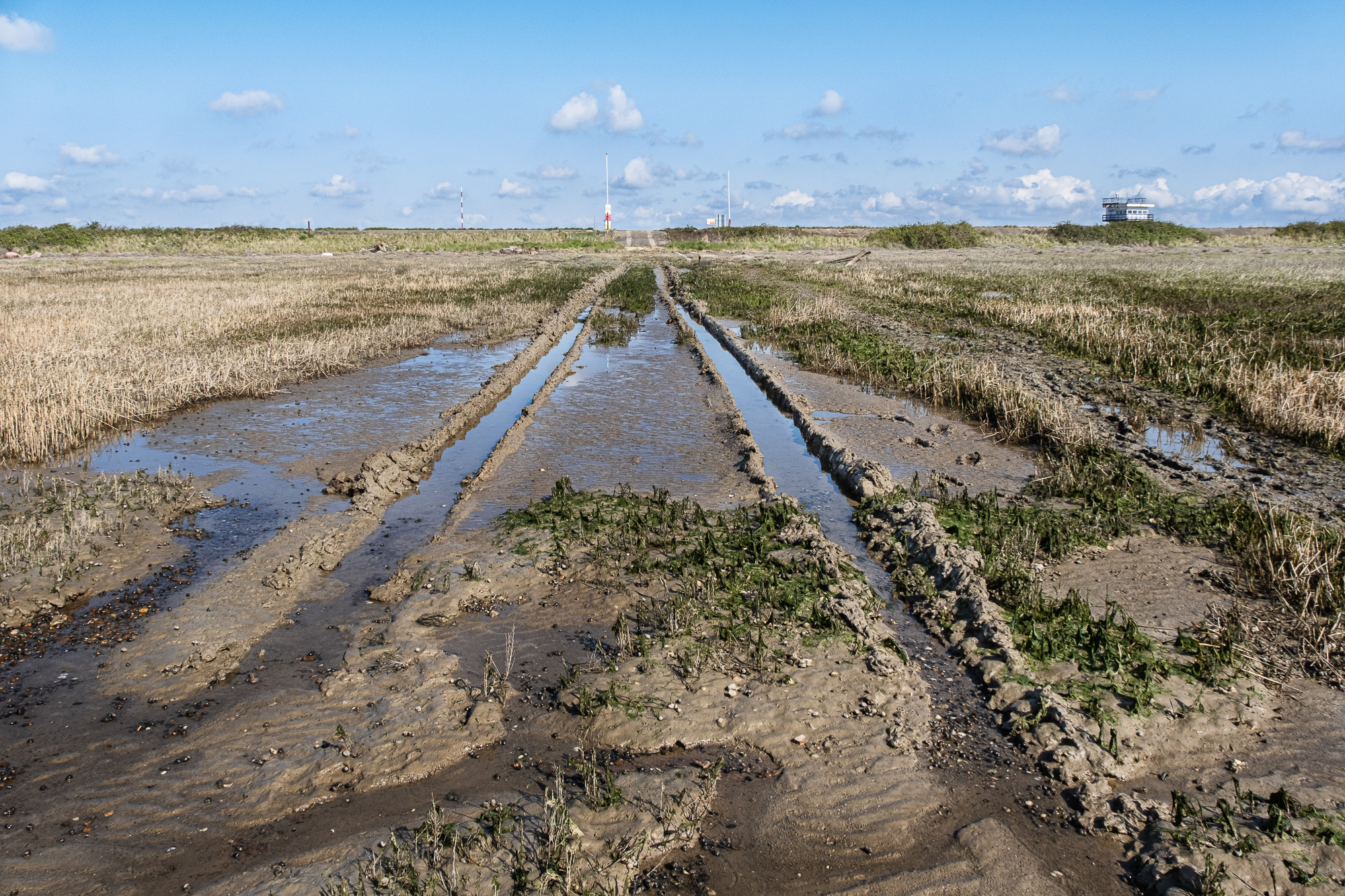
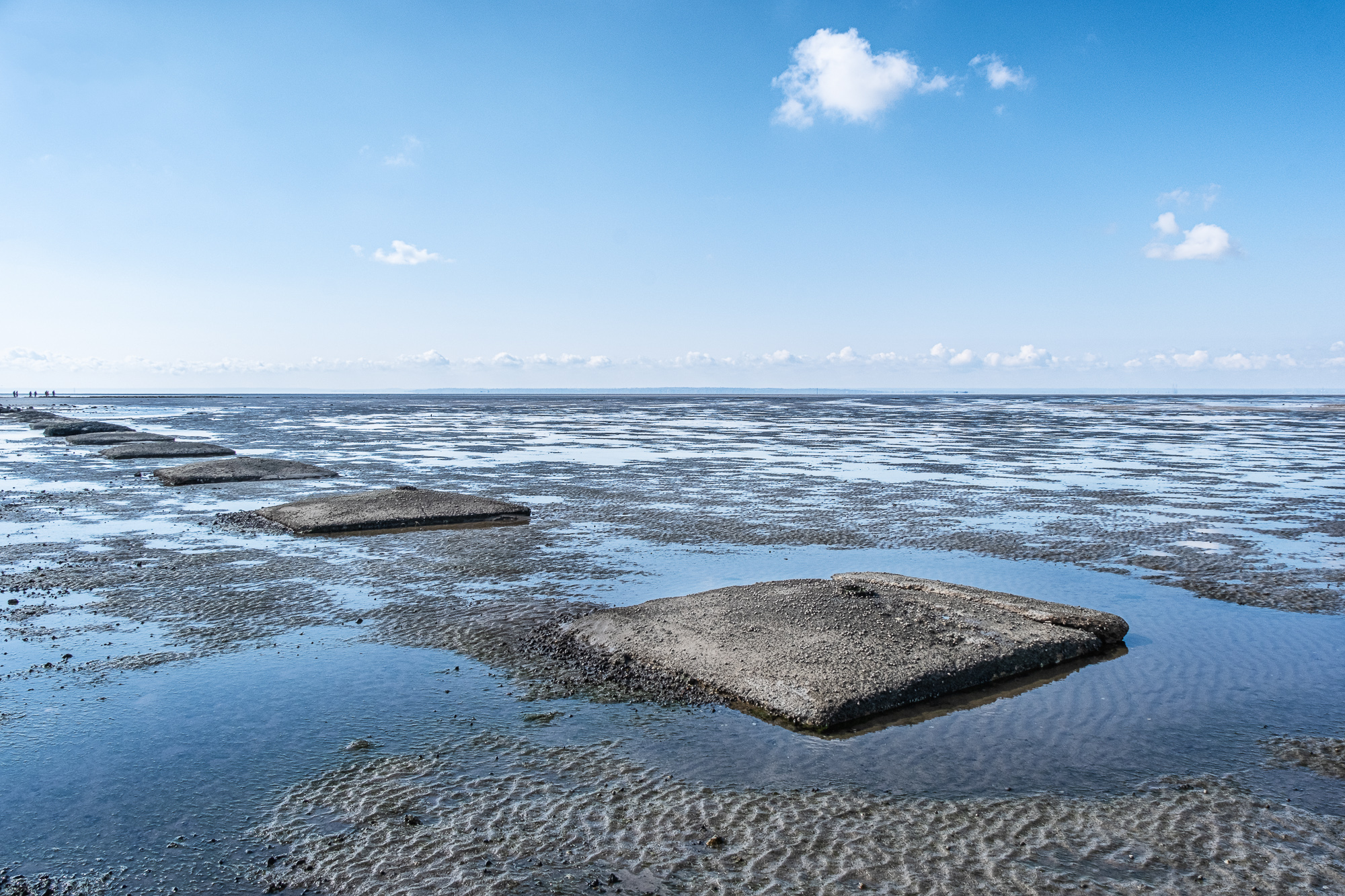
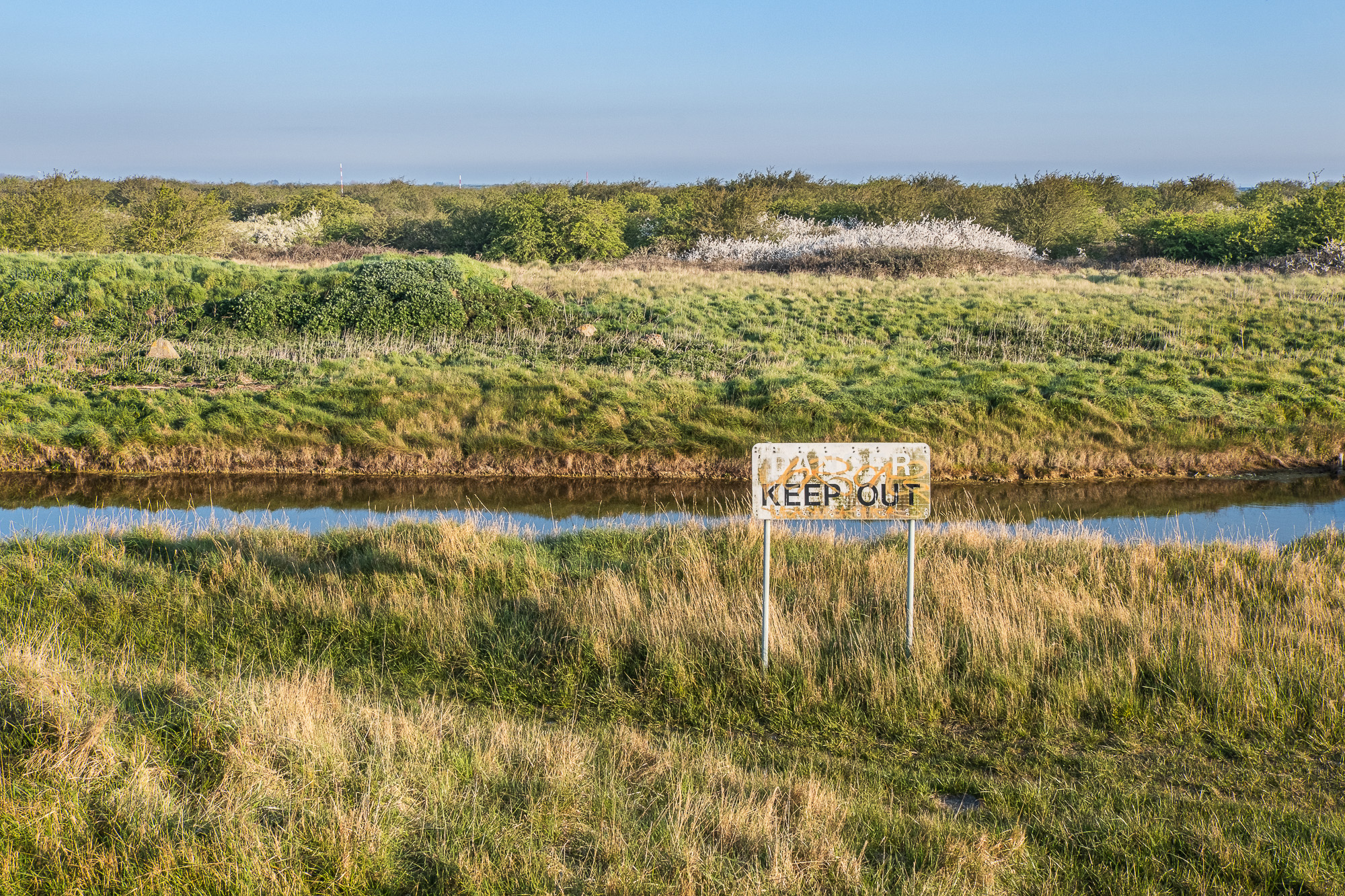
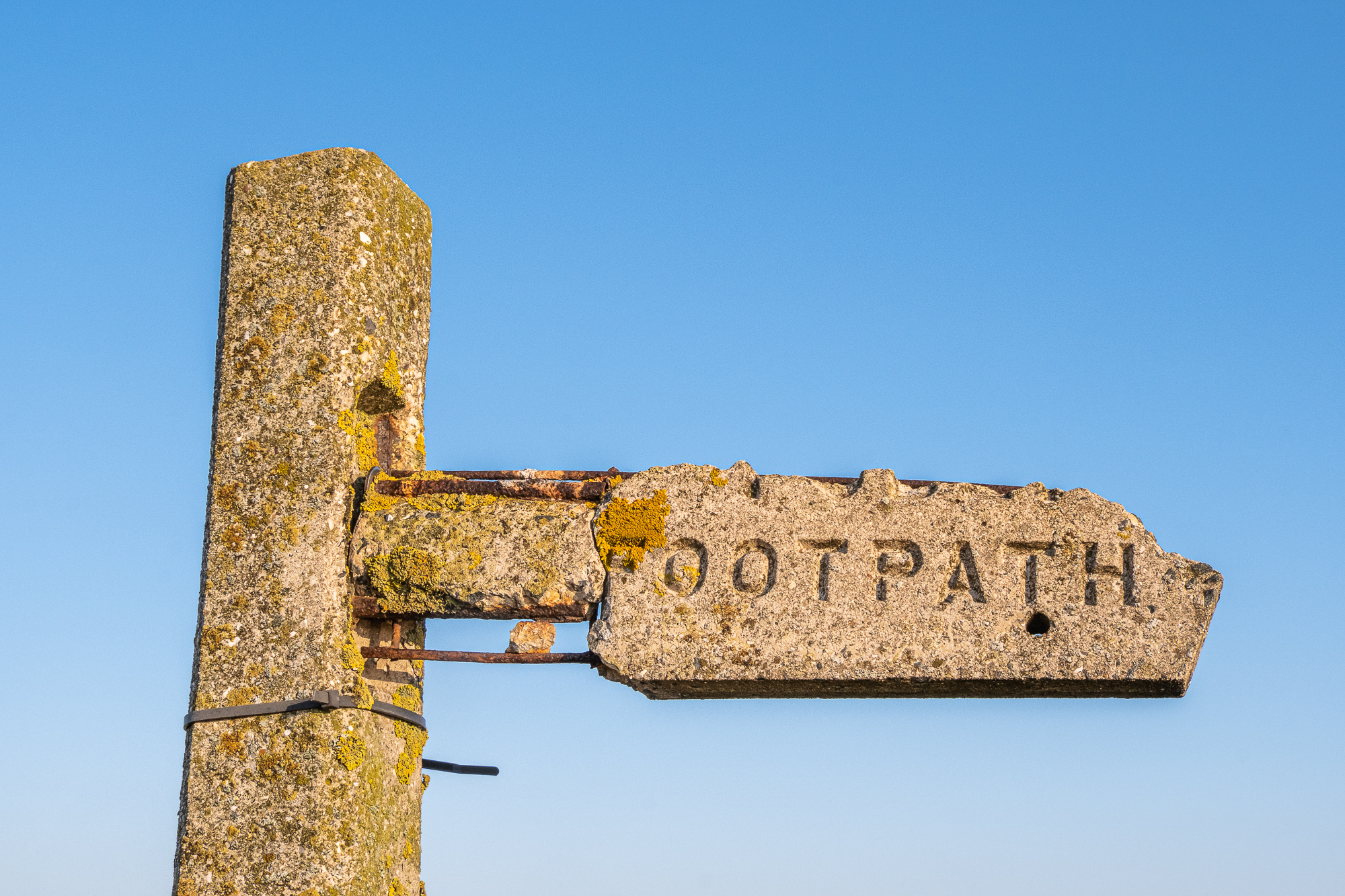
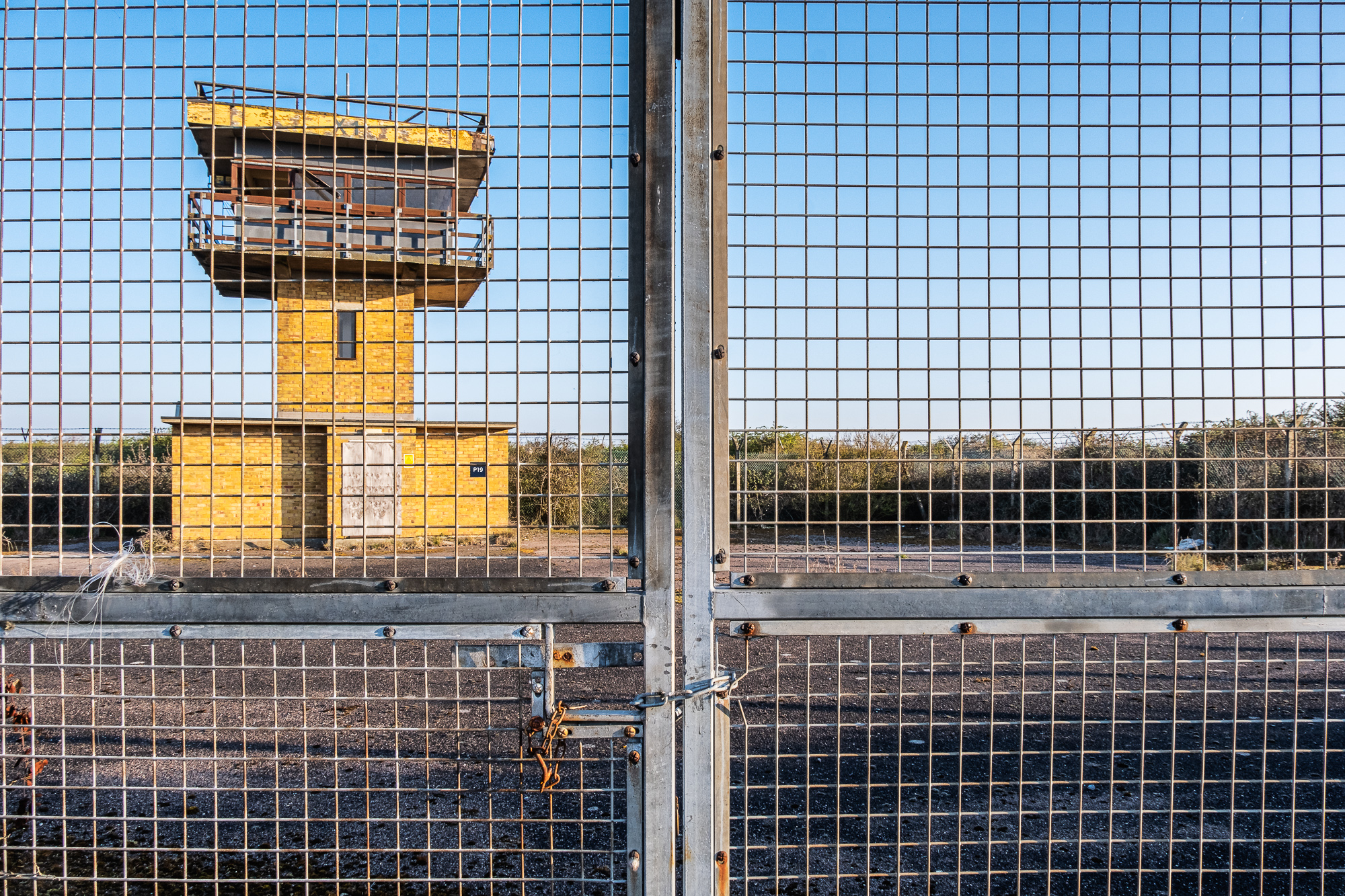
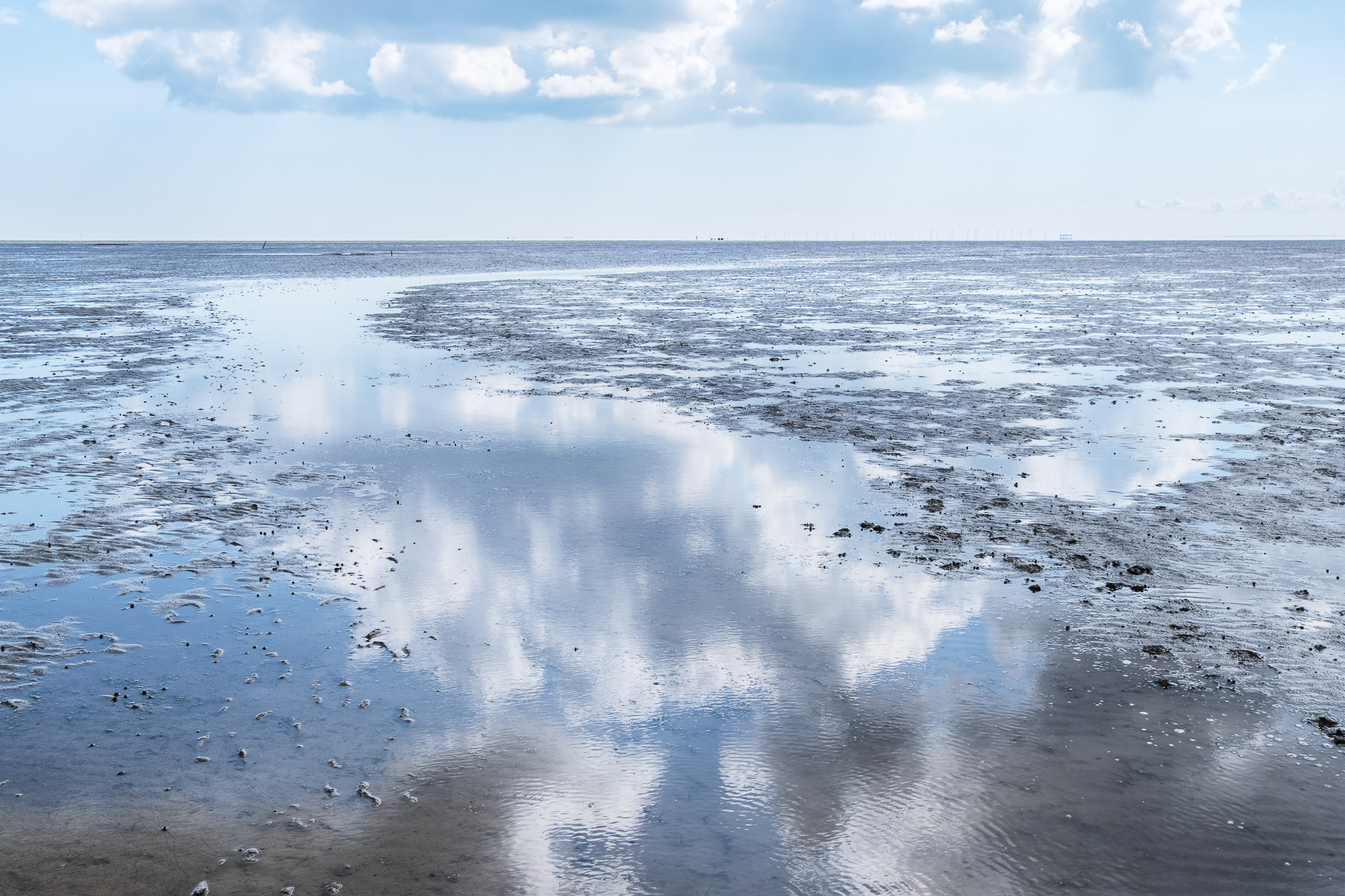
There is also an interesting article about walking the Broomway in the Spring edition of the Country Walking magazine, which you can read below. Quite appropriately, it is called Walking The Doomway.
Share this story

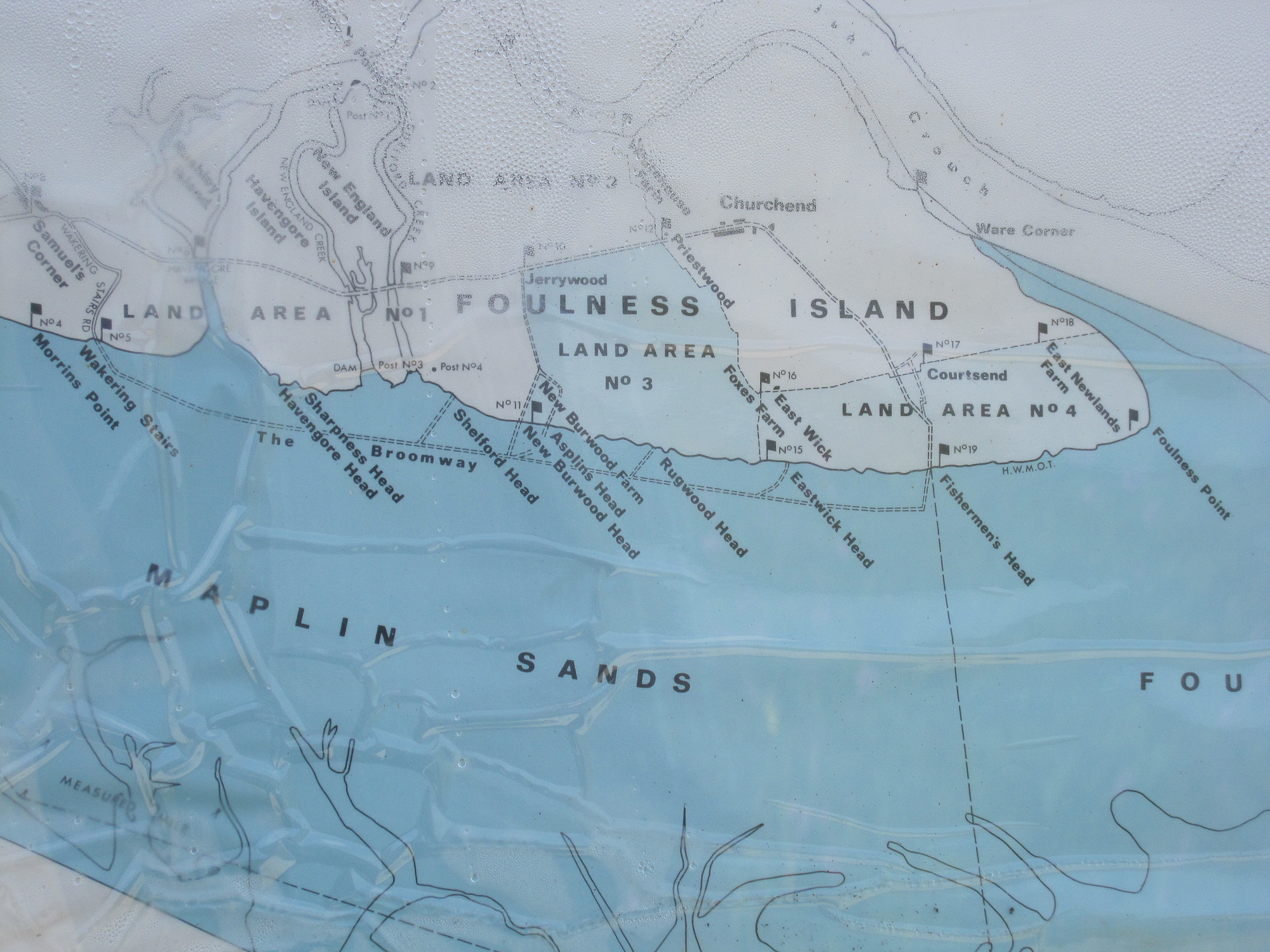
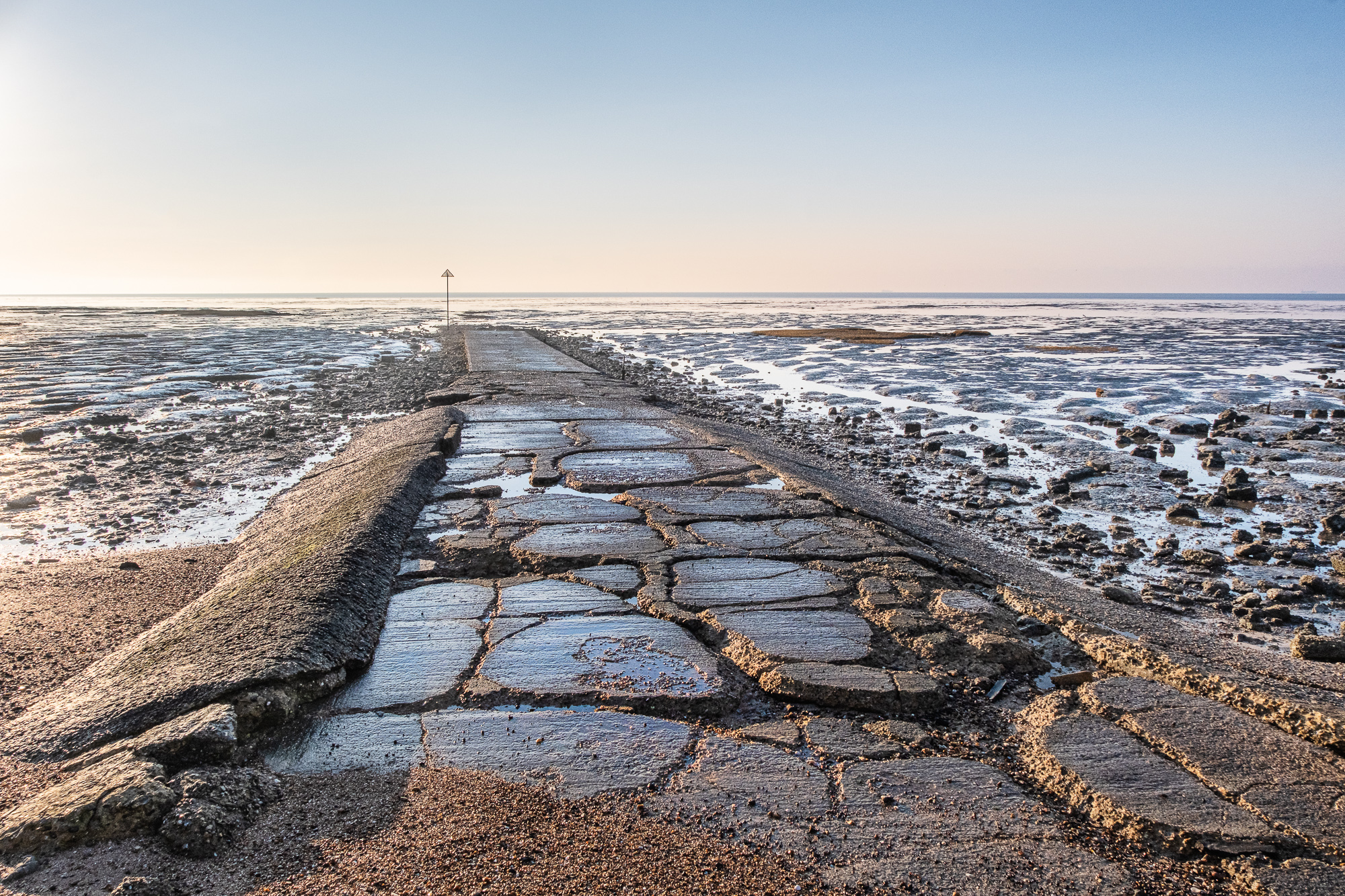
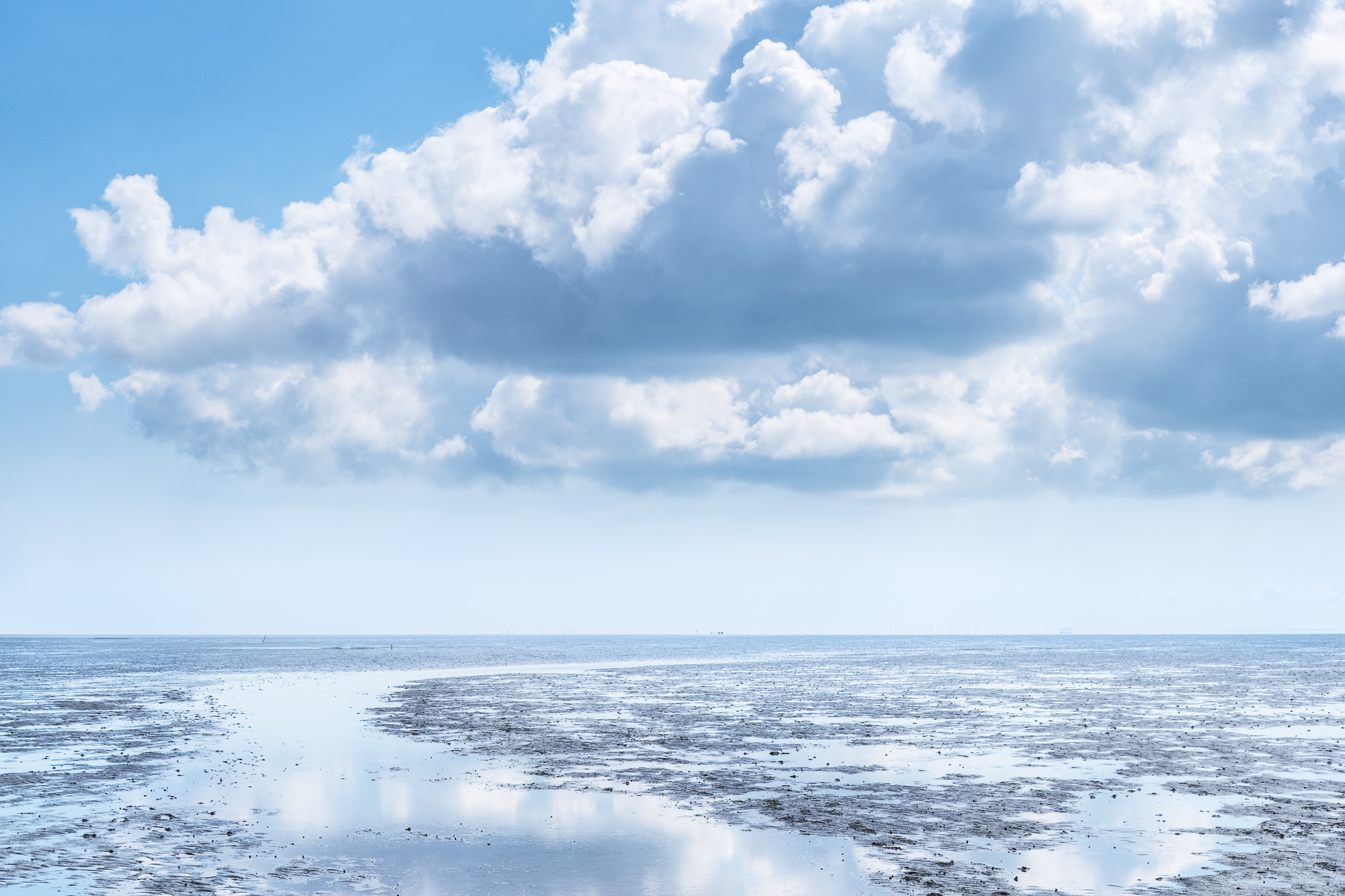
I’m in the middle of Robert Macfarlane s book and I googled broomway so I could see the eerie beauty he describes. Your photos are stunning (it’s really like walking on glass) and how magical to have done this walk with a seasoned guide! Cheers
Thank you very much, Lindsey for your lovely message. It is a wonderful experience. I can only recommend it, having just come back from my second trip with Tom this morning. The sunrise was incredibly magical.
Dear Vanda .I am pleased you walked the Broomway. Do not be afraid to walk it alone but do take a pocket compass. A light mist can be a killer as all landmarks disappear. My Mum as a girl rode on the horse and waggons that passed along the track everyday. She said it was like the waggon trains in westerns! Summer is the best time as you can walk bare footed which is a delight in itself.
Dear Patrick,
Thank you so much for your lovely comment and for the encouragement. I might just try that. Or at least a part of the Broomway. Walking barefooted sounds like a wonderful idea and something that I definitely would love to do. What an amazing feeling it must have been for your Mum to ride through this stunning water world on the horse!
All the very best to you,
Vanda
Very interesting article and photos! That must have been quite an experience with an inherent sublime touch due to its history and very real danger.
Thank you so much, Alex. It was a wonderful experience and I would highly recommend it to you, if you go with a guide. There are people who walk it on their own, but I am not that brave, and I would definitely not like to put anyone else in danger.